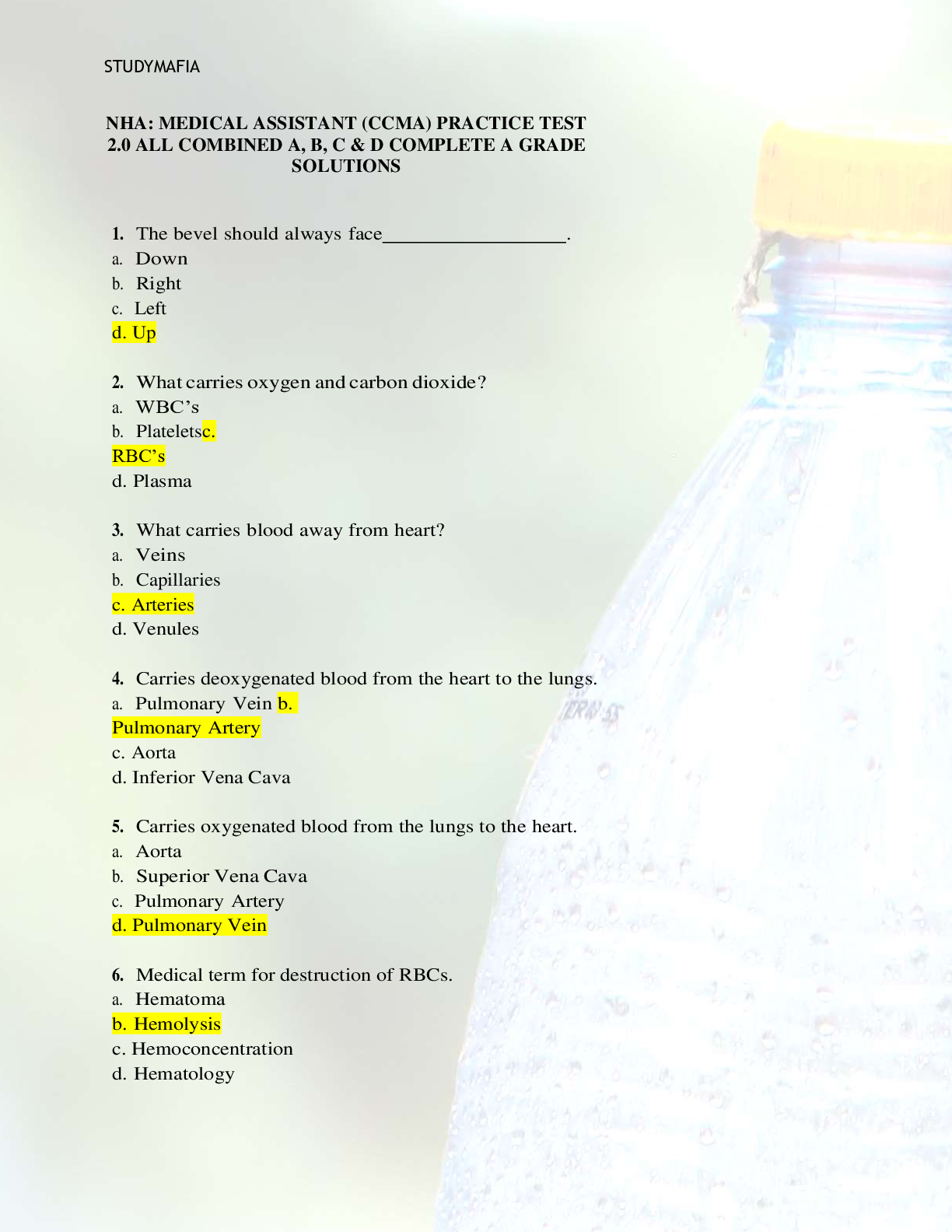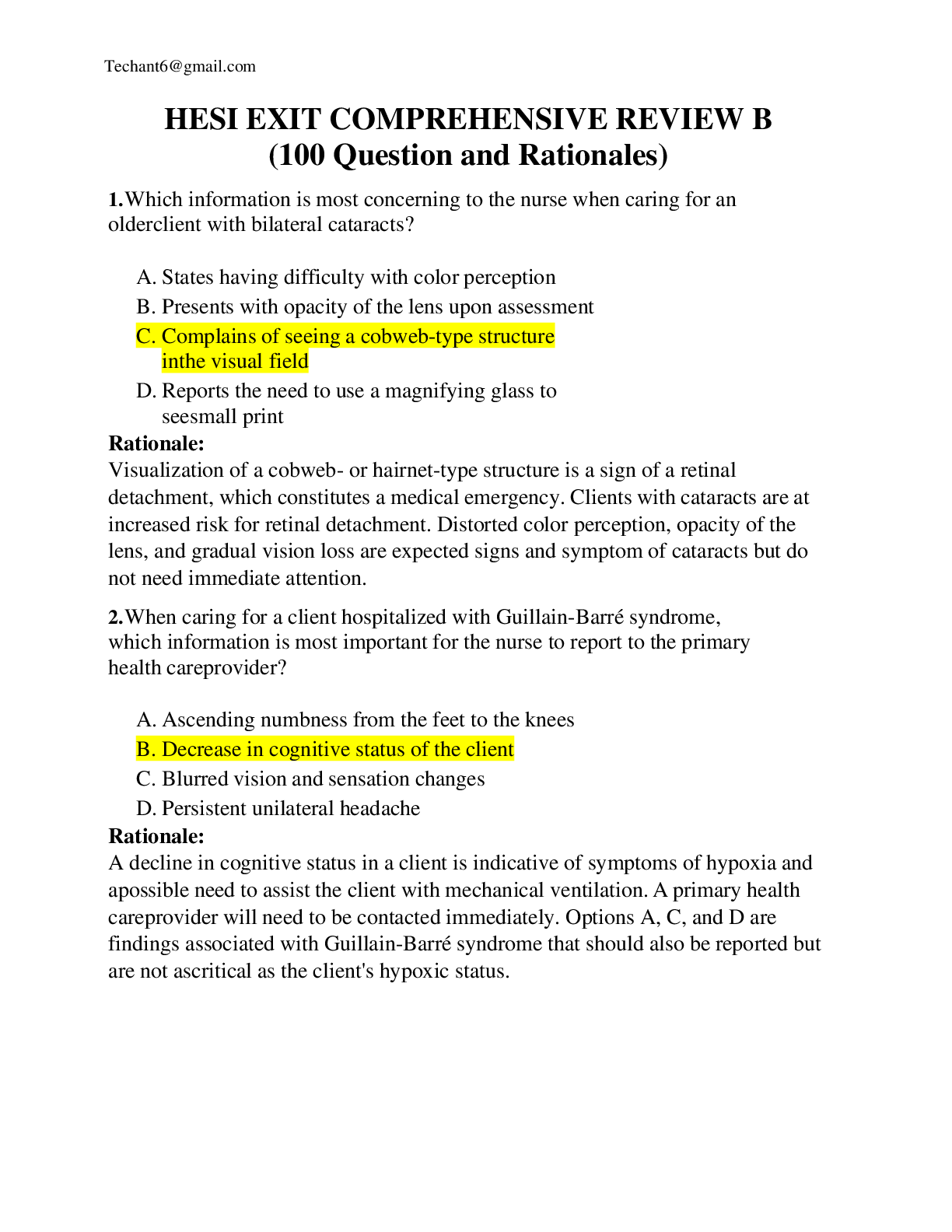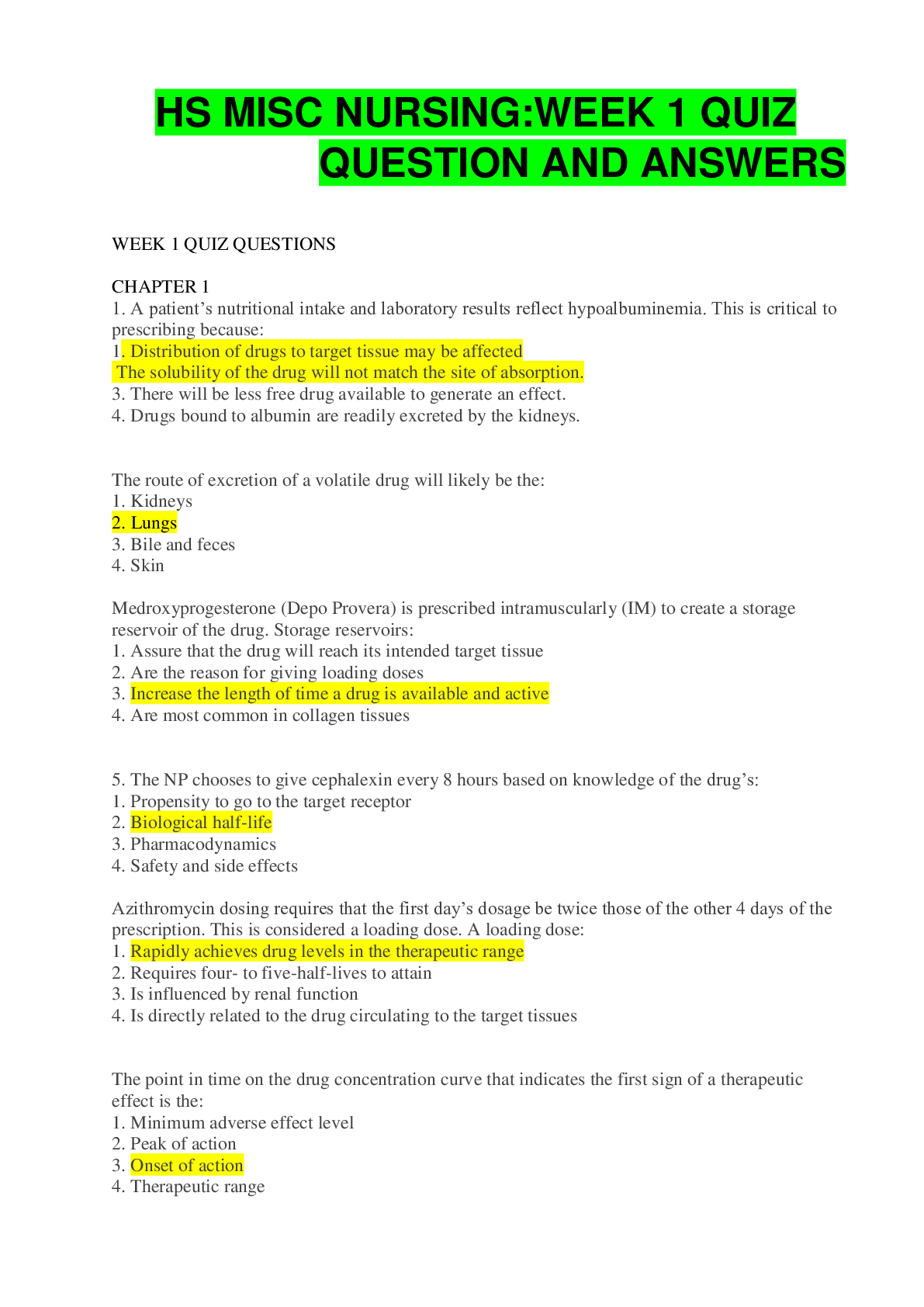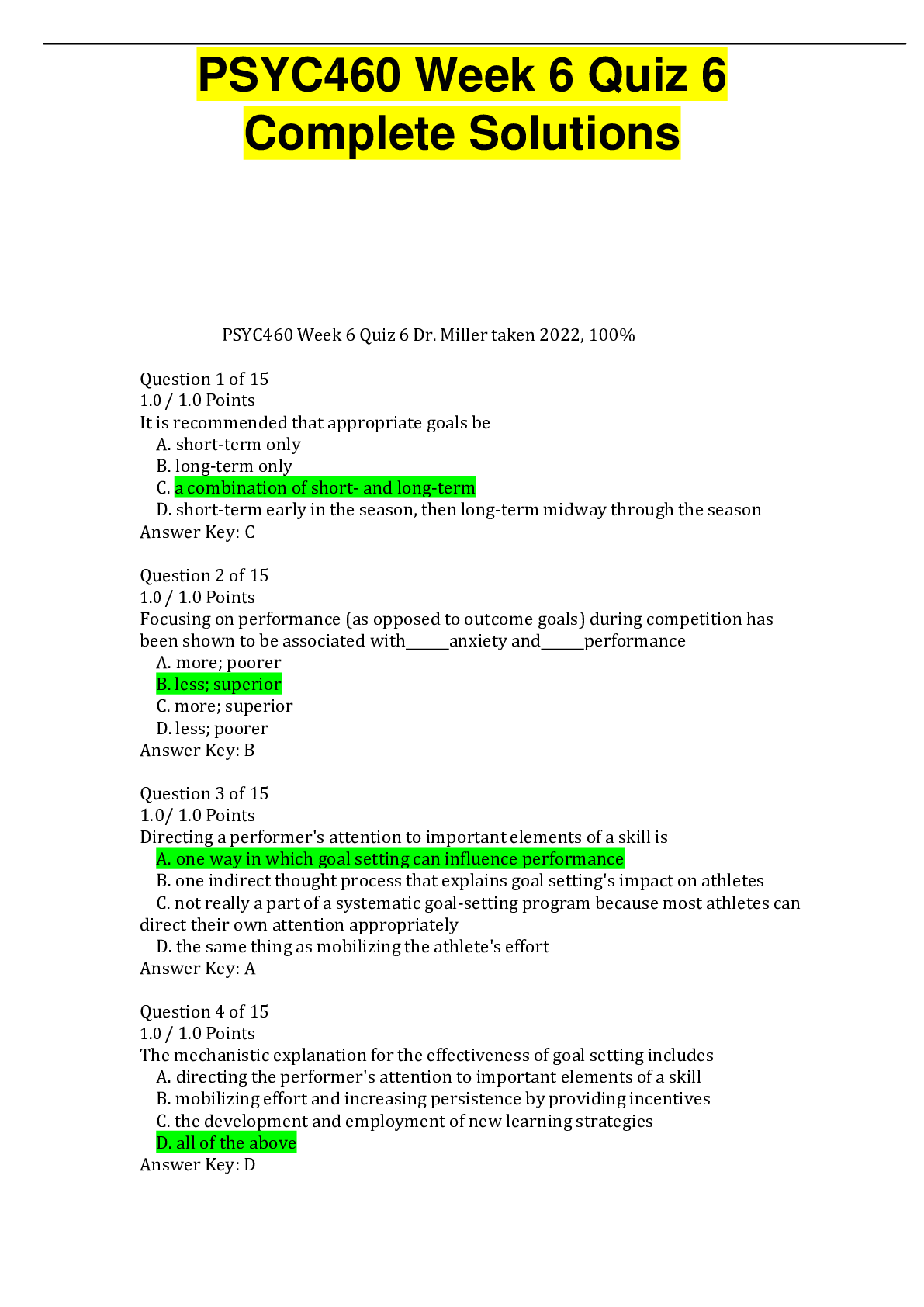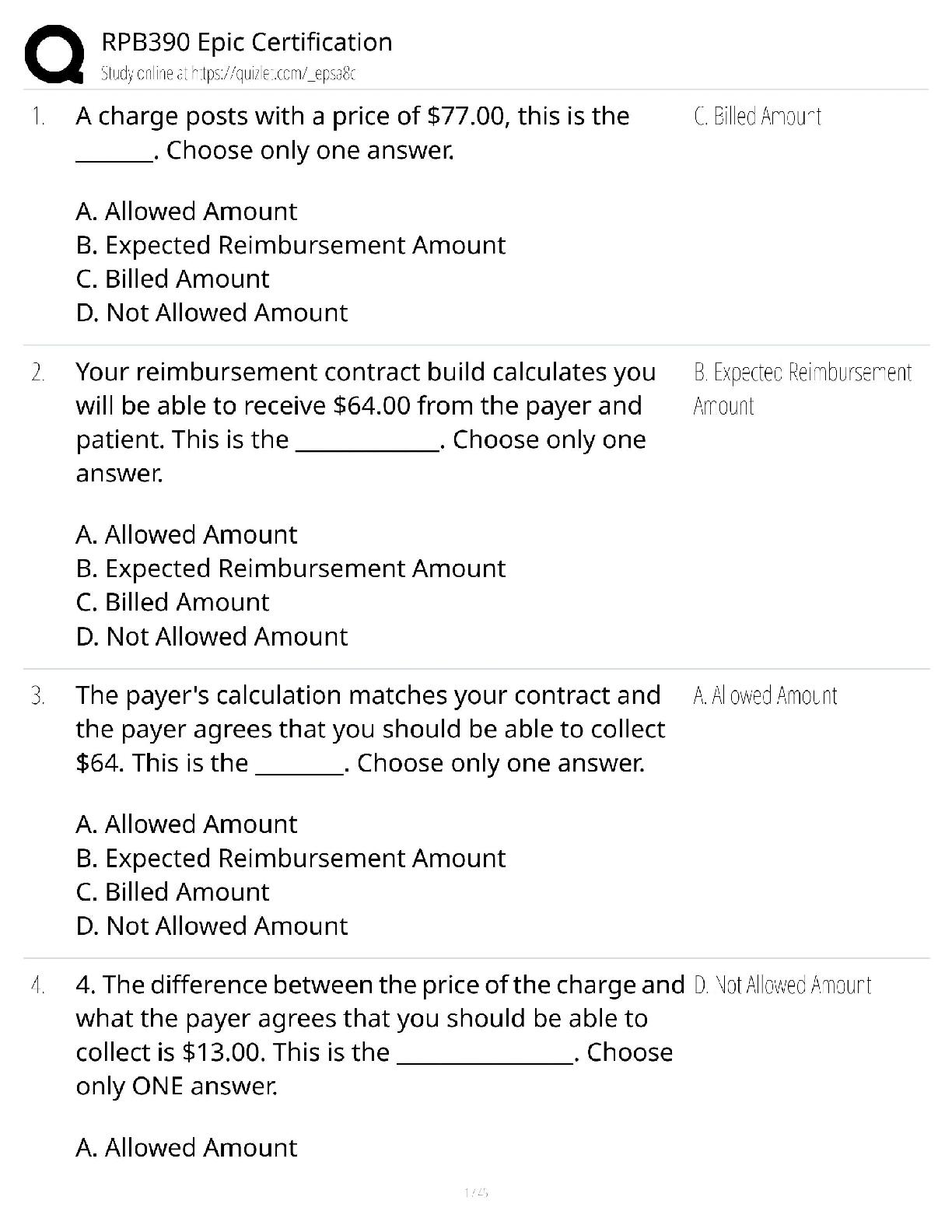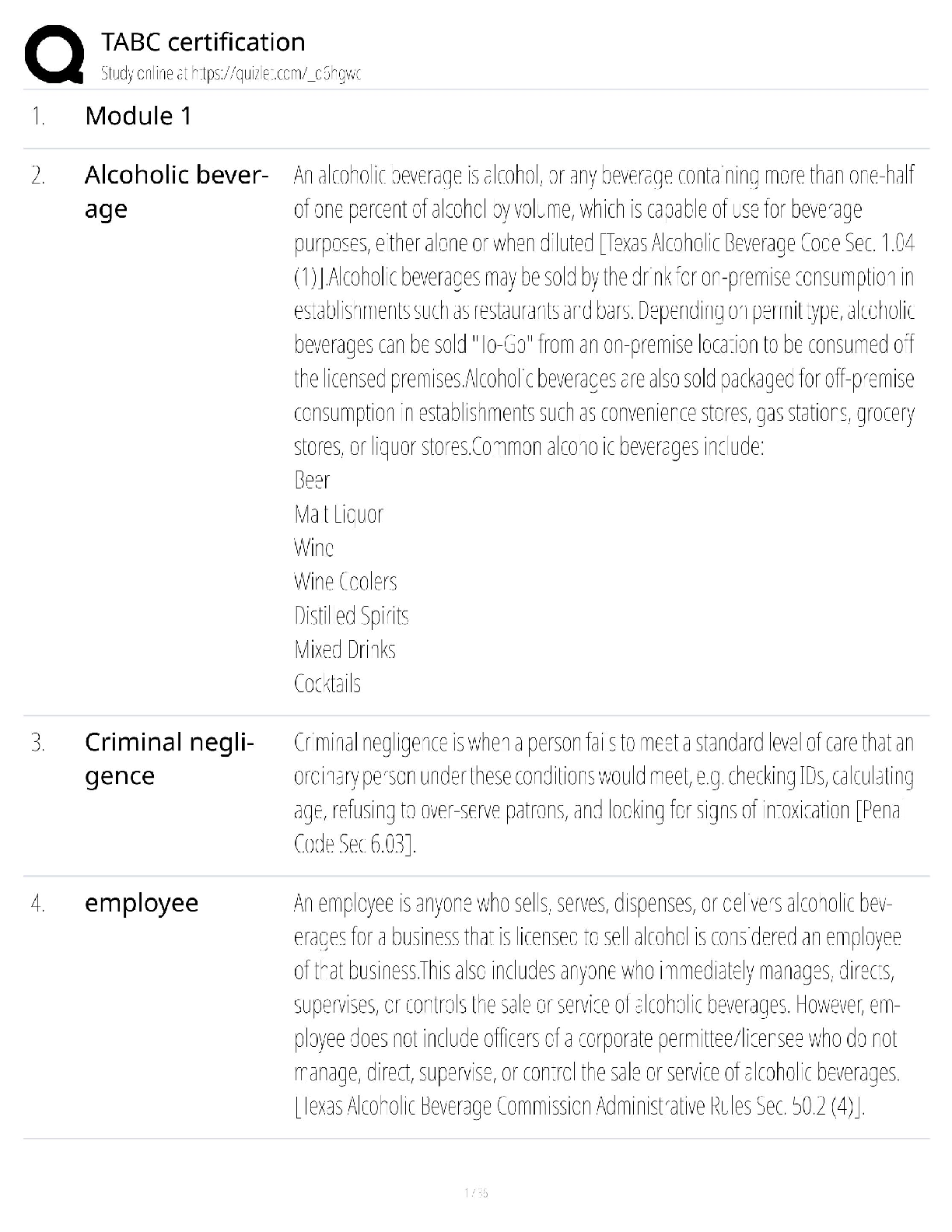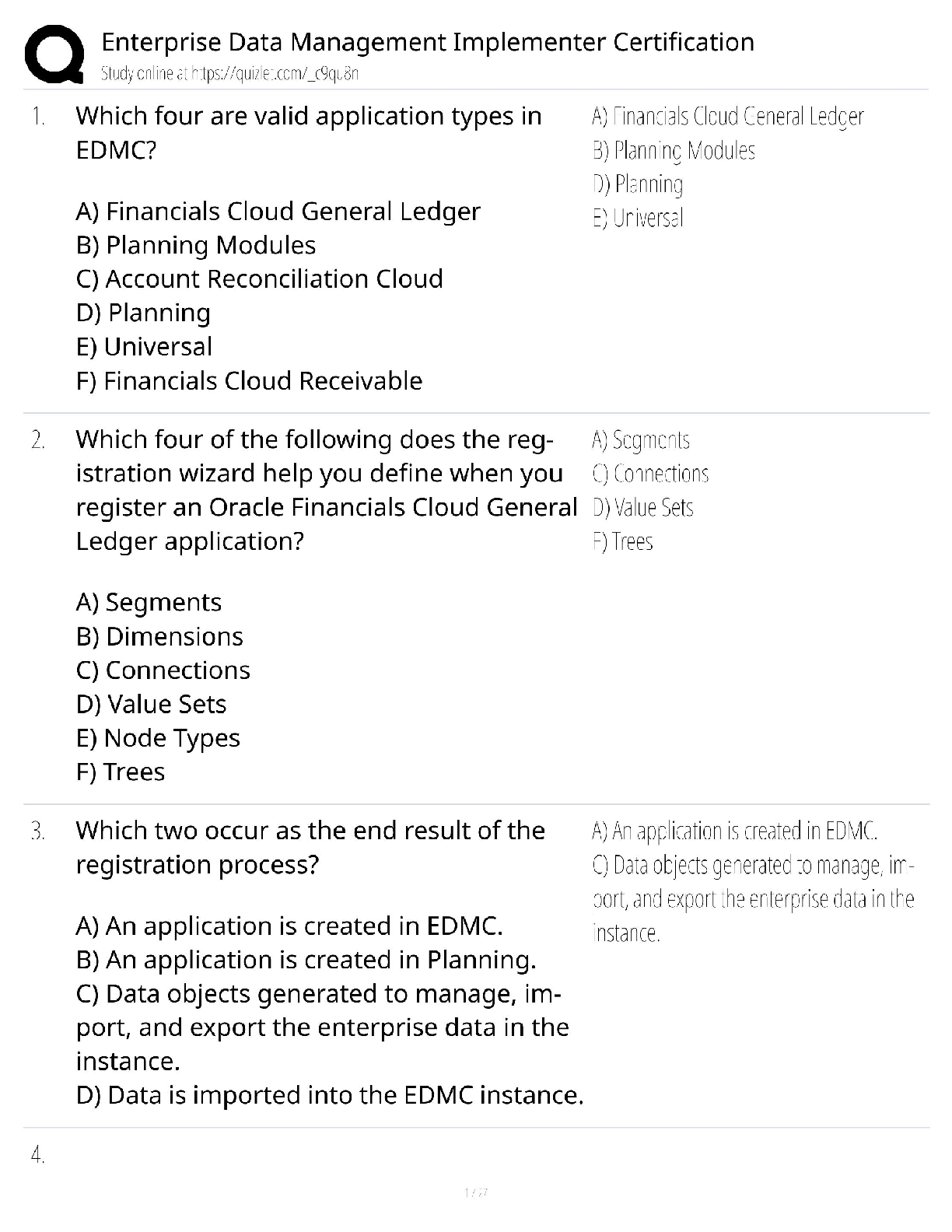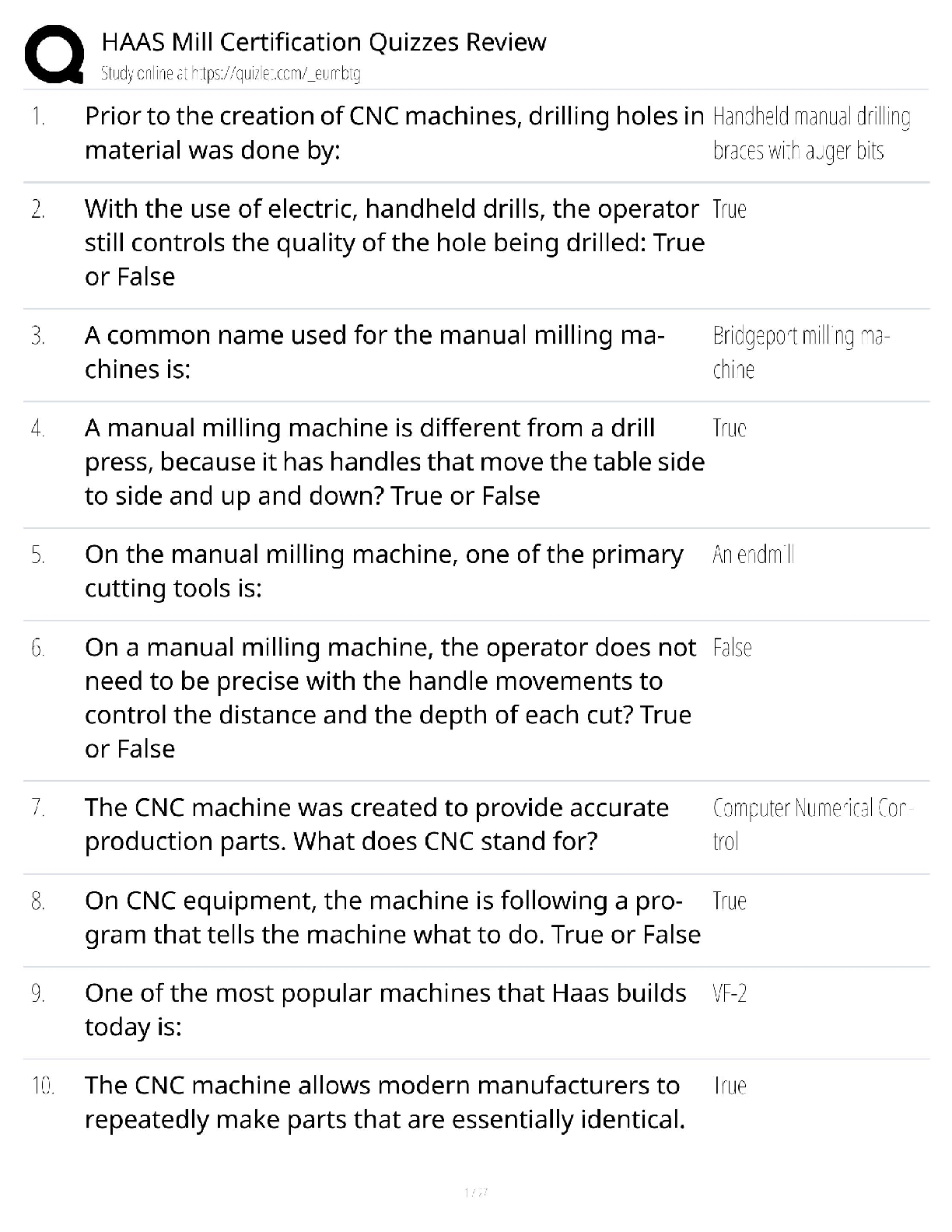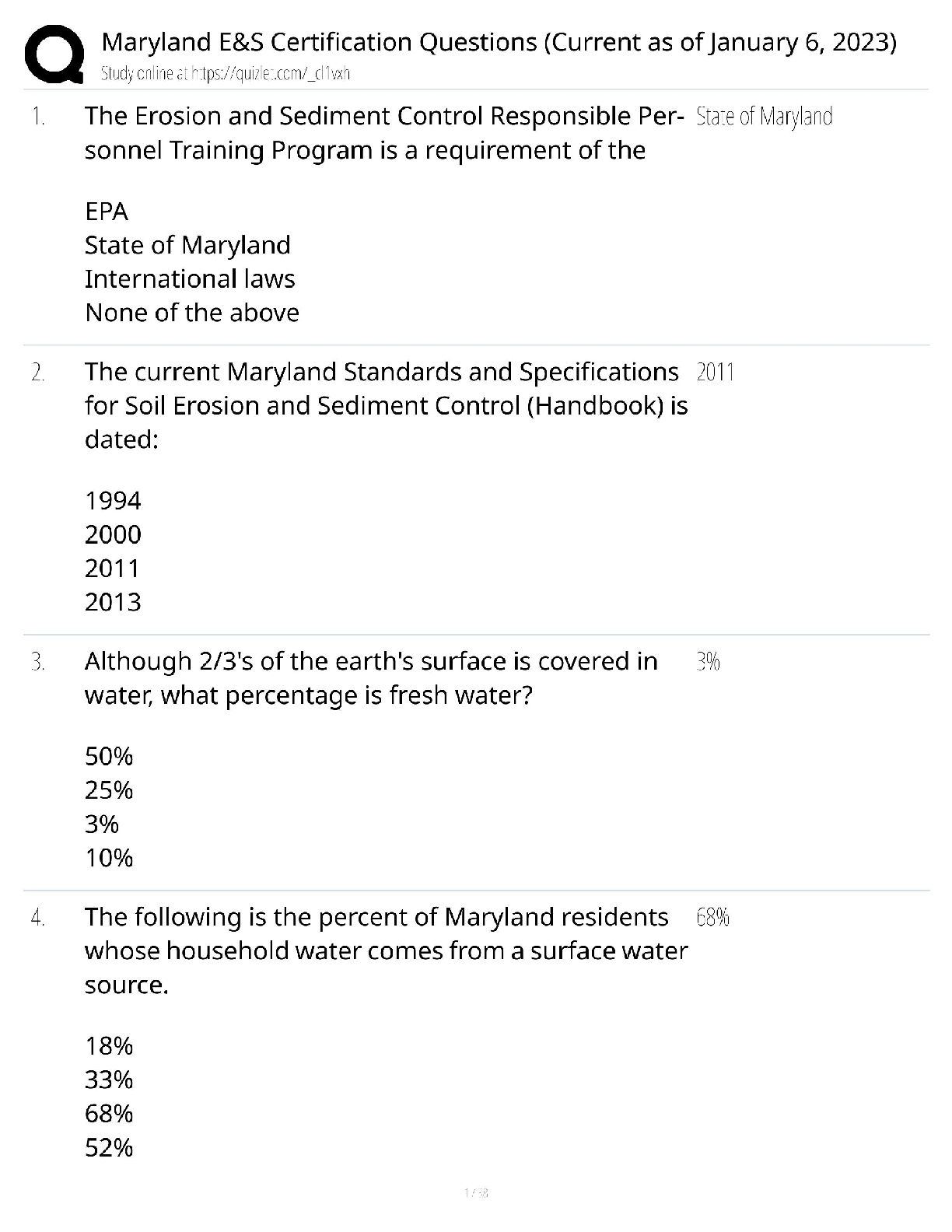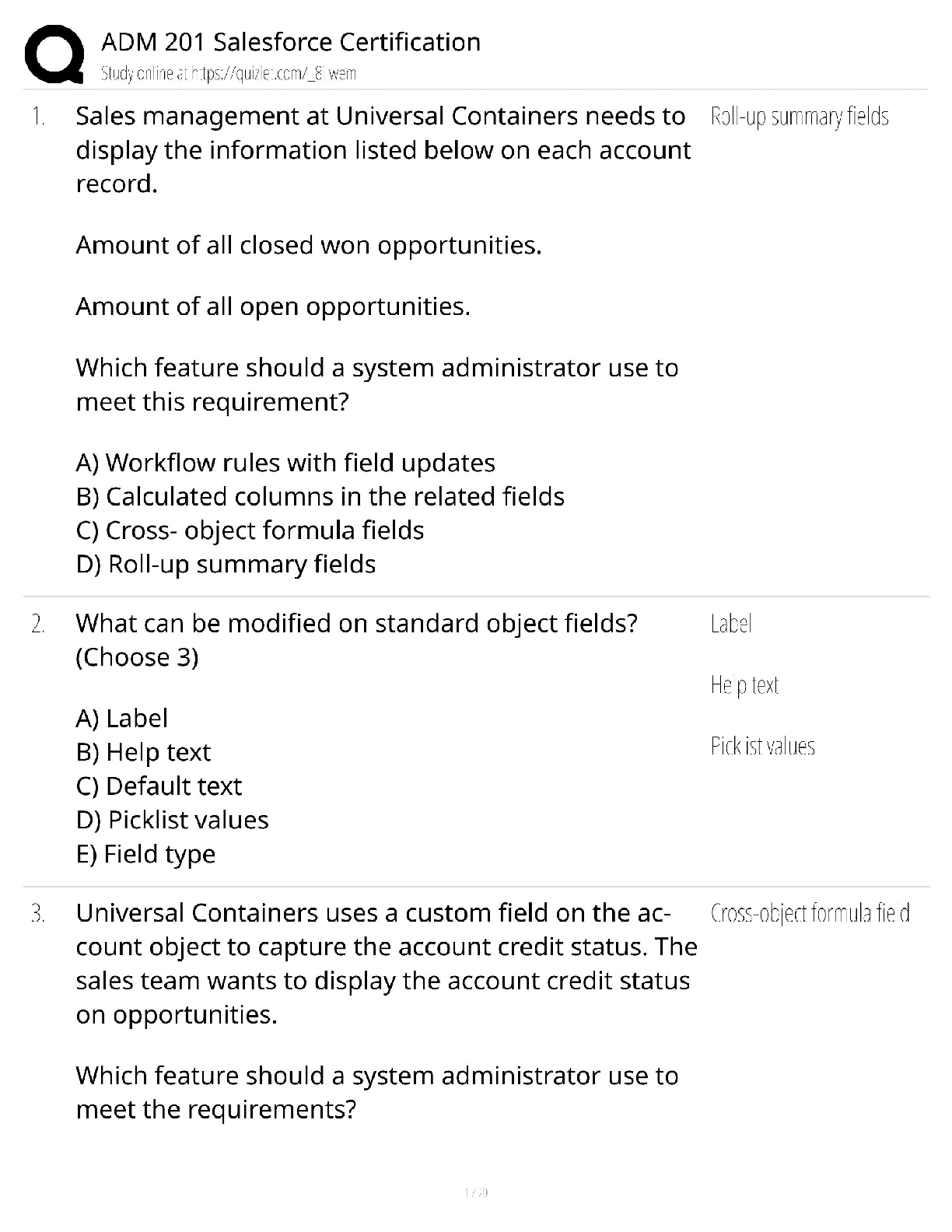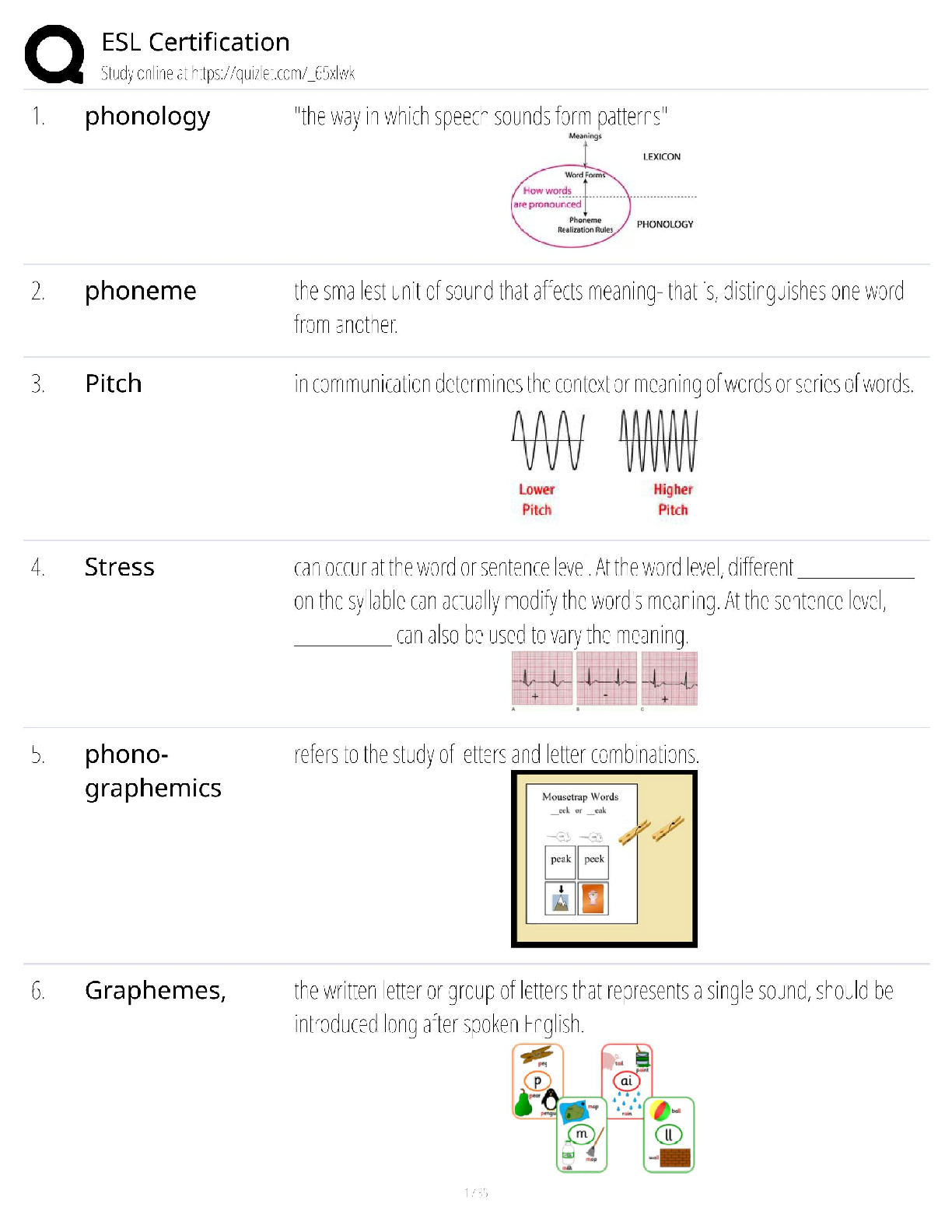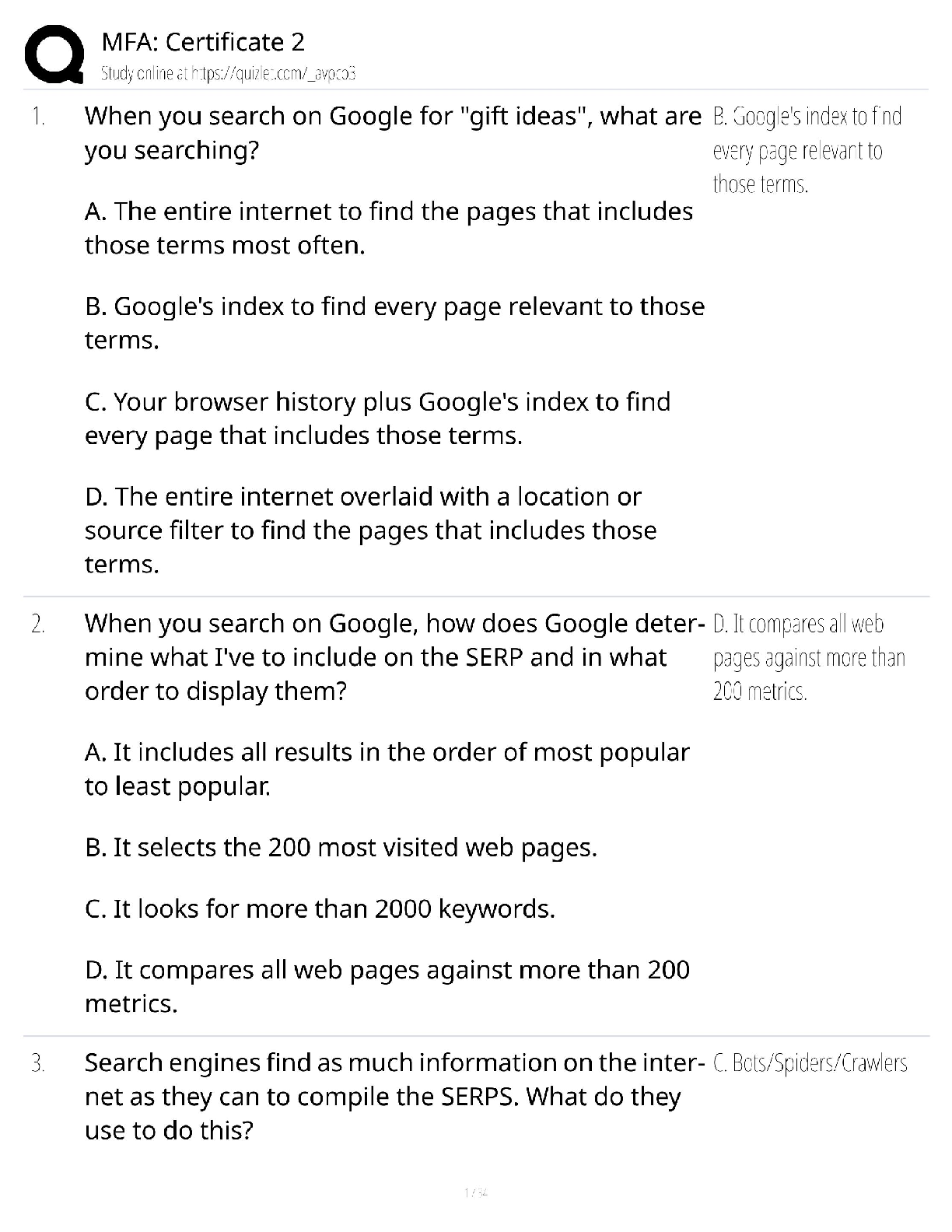BioChemistry > QUESTIONS & ANSWERS > WGU Biochem Module 3 Questions and Complete Solutions.New 2021..Purchase to boost your Knowledge and (All)
WGU Biochem Module 3 Questions and Complete Solutions.New 2021..Purchase to boost your Knowledge and Score A.
Document Content and Description Below
1. Which property of enzymes is illustrated in the final step of the enzymatic cycle? a. Enzymes increase the reaction rate for a reaction. b. Enzymes lower the activation energy for a reaction. c. ... Enzymes are reusable. d. Enzymes are specific. Answer: C. In the final step of the enzymatic cycle, the product is released and the enzyme is able to bind to a new substrate and begin the cycle again. 2. In the enzyme cycle, which step immediately follows induced fit? a. Formation of the enzyme-substrate complex b. Release of the product and enzyme complex c. Formation of the enzyme-molecule complex d. Formation of the enzyme-product complex Answer: D. The induced fit refers to the conformational change that the enzyme undergoes when it binds to the substrate to form the enzyme-substrate complex. Therefore, the enzymatic cycle step that occurs after the induced fit is the formation of the enzyme-product complex. 3. Which type of inhibition occurs when a particular drug binds to the active site of an enzyme? a. Noncompetitive b. Irreversible c. Competitive d. Uncompetitive Answer: C. Competitive inhibitors compete with the substrate to bind to the active site of the enzyme. 4. Salivary amylase, an enzyme responsible for partial digestion of carbohydrates, has optimum activity at a pH value of 6.8. What is the impact on the activity if the pH is decreased to 4.0? a. Significantly increase b. Slightly decrease c. Slightly increase d. Significantly decrease Answer: D. A drop in pH from 6.8 to 4.0 is a significant change in pH. Recall that the hydrogen bonds and ionic bonds that hold protein structures together can be broken by changes in pH. The disruption in protein structure due to this pH change will also significantly decrease amylase activity. 5. Low levels of glutathione are associated with certain types of ovarian and breast cancers. In the synthesis of glutathione, glutathione accumulates in the cell, binding to an enzyme in the pathway and temporarily preventing the synthesis of glutathione. Which type of inhibition is described by this scenario? a. Uncompetitive b. Allosteric c. Feedback d. Competitive Answer: C. The keywords here are that glutathione accumulates and binds to an enzyme in the pathway to prevent synthesis. Feedback inhibition occurs when a product of a pathway turns into an inhibitor of an enzyme earlier in the pathway. 6. Lipase is an enzyme with an optimum temperature of 98.6°F and an optimum pH of 7.0 in the duodenum in the human body. If a person is experiencing a fever of 99.8°F, what will increase the activity of the lipase enzyme? a. Decrease in temperature b. Increase of pH of duodenum to 8.0 c. Increase in temperature d. Decrease of the substrate of the enzyme Answer: A. An enzyme will have the highest activity when it is under optimal conditions. In this case, the fever of 99.8 is above the optimal temperature, so lowering the temperature will increase activity. Decreasing the substrate of the enzyme would also decrease activity because the substrate is needed to initiate the reaction. 7. The enzyme glucokinase only binds its substrate glucose and converts glucose into the product glucose-6-phosphate. Which property of enzymes is described by this scenario? a. Reaction rate b. Specificity c. Activation energy d. Induced fit Answer: B. Enzymes have a high degree of specificity. They will bind to one specific class of molecules and usually catalyze only one type of reaction. 8. Low levels of glutathione are associated with neurological, immunological, and cardiovascular impairments. Two enzymatic reactions are involved in the synthesis of glutathione. In the second enzymatic reaction, glutathione synthetase converts glycine to glutathione. What would potentially decrease risks associated with low levels of glutathione? a. Noncompetitive inhibitor of glutathione synthetase b. Uncompetitive inhibitor of glutathione synthetase c. Increasing the amount of glycine in the diet d. Decreasing the amount of glycine in the diet [Show More]
Last updated: 3 years ago
Preview 1 out of 20 pages
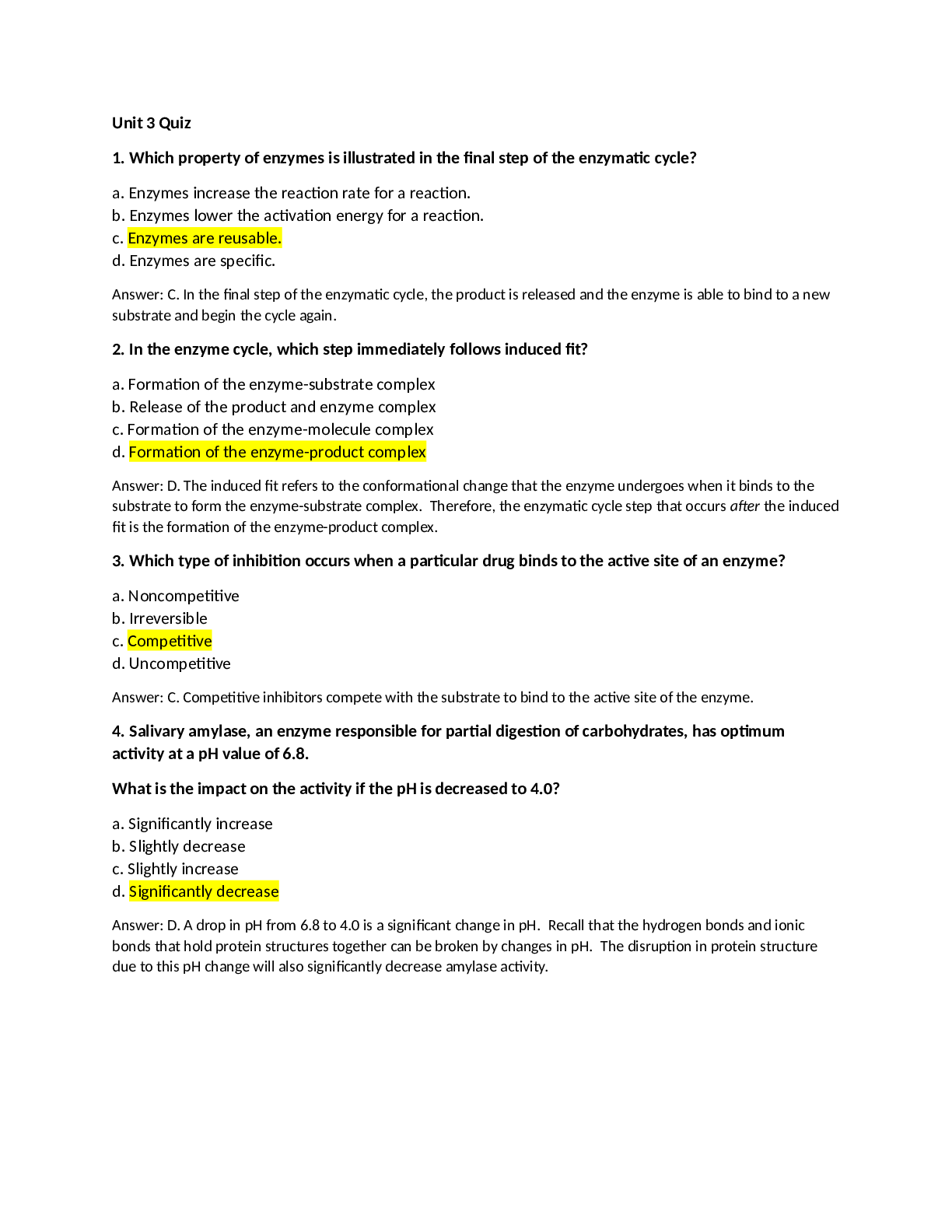
Buy this document to get the full access instantly
Instant Download Access after purchase
Buy NowInstant download
We Accept:

Reviews( 0 )
$14.00
Can't find what you want? Try our AI powered Search
Document information
Connected school, study & course
About the document
Uploaded On
May 09, 2021
Number of pages
20
Written in
All
Additional information
This document has been written for:
Uploaded
May 09, 2021
Downloads
0
Views
115


